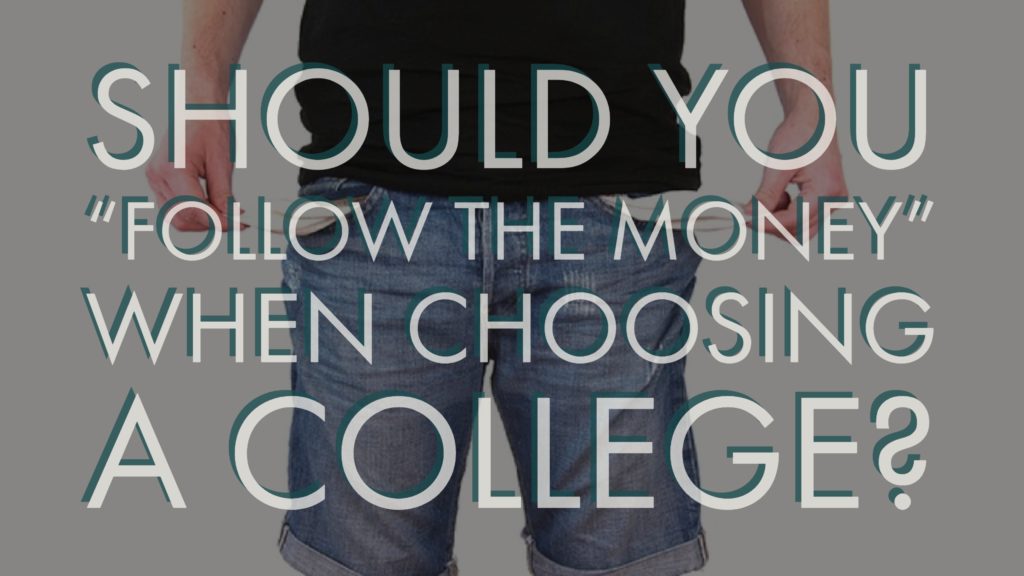
I’ve said over and over again to parents, “You’ve got to look at the statistics when it comes to paying for college.” Before the list begins, before the college visits start and before the applications are completed, you MUST know how much it costs and if you can afford to pay for it. You should “follow the money” when choosing a college!
Where can you find the statistics? You can do your own research on College Navigator or CollegeData, or you look at these compiled from a survey by the Princeton Review.
Look at these statistics from the Princeton Review’s 2018 Edition of Colleges That Pay You Back:
- “Best Financial Aid” #1 Bowdoin College (ME) / #25 Macalester College (MN)
- “Best Career Placement” – #1 Harvey Mudd College (CA) / #25 Cornell University (NY)
- “Best Alumni Network” – #1 Pennsylvania State University / #25 Union College (NY)
- “Best Schools for Internships” – #1 Northeastern University (MA) / #25 Gettysburg College (PA)
- “Best Schools for Making an Impact” – #1 Wesleyan University (CT) / #25 Kalamazoo College (MI)
- “Top Colleges That Pay You Back for Students with No Demonstrated Need” – #1 Harvey Mudd College (CA) / #25 University of Michigan—Ann Arbor
These are more than statistics. They help you decide if your college investment will be worth the cost. Your student may not be thinking along these lines, but it’s your job to bring them down to earth.
When choosing a college, ROI (return on investment) should be part of the decision mix. Take a look at these Top 50 colleges with the highest ROI.
What does the survey tell us?
Among the 200 colleges (135 private and 65 public) in the book:
- the average grant to students with need is $26,800
- the median starting salary of graduates is $55,700 and mid-career salary is $108,700.
Among the book’s 65 public colleges:
- the average net cost of attendance (sticker price minus average grant) for in-state students receiving need-based aid is $12,700
- the average admission rate is 53% and 12 colleges admit over 70%
Among the survey findings, 99% of respondents viewed college as “worth it,” but 98% said “financial aid would be necessary” to pay for it (65% of that cohort deemed aid “extremely necessary”).
Why should you consider these factors?
Before my daughter chose a college, we didn’t examine any of these factors. We compared financial aid packages, but we didn’t look for a college that was a good return on our investment. When it comes down to it, you spend a good amount of money on a college education. It’s an investment in your student’s future. We would never knowingly throw money into a bad investment or purchase a home high above market value, but every day parents invest their money in a college that won’t pay their student back.
Whether it’s career placement, networking, internships or tremendous financial aid, you should consider some of these colleges when making that final college list.
